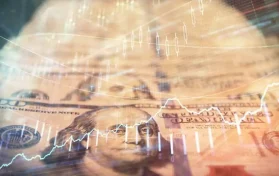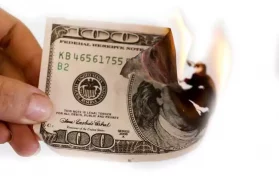
Inflation is a hot news topic; each month, inflation surges higher and higher. Wage gains are wiped out due to the ever-rising cost of food and fuel. The latest finance report for January shows that the consumer price index rose to 7.5 percent, setting a new forty-year high record once again.
Each month, record high inflation seems to creep upwards, and the American public is growing weary of going grocery shopping to find shelves only partially stocked. When Americans can find grocery items, they are historically higher.
For Democrats, this record high inflation couldn’t come at a worse time. 2022 is a mid-term election year, and political pundits predict this surging inflation will hurt the party come November.
Consumer demand is still high, and the supply chain continues to be an issue. Both of these drive inflation at any time, but this historical inflation is so drastic that Americans who have received a raise in wages are seeing that extra money wiped out by the price of everyday necessities.
One financial expert said that if Americans are getting a wage gain of at least 8 percent, their economic situation hasn’t changed at all due to the cost of living.
When the Labor Department released its monthly report on Thursday, they added that this 7.5% consumer price index was another record-breaking increase in inflation. This is the fastest increase in inflation since February 1982. At that time, inflation hit 7.6%. Between December and January, the consumer price index rose to 7.6% – this includes goods from gas and groceries to health care and rent.
At the end of 2021, inflation had risen by 7 percent. In just one month, however, prices rose another .6 percent on “core” prices, which include everything except food and fuel. The price of energy is up 27 percent from one year ago. In December, those “core” prices had risen by 5.5% in just one month. That statistic shows the greatest increase in a one-month period since August 1982.
The Labor Department’s report exceeded economists’ expectation – they had predicted that inflation would sit at 7.3 percent and at .5 percent on a monthly basis.
The chief strategist at Principal Global Investors, Seema Shah, remarked, “U.S. annual CPI is the highest since 1982, and what’s worse is that this likely isn’t the peak. Higher-than-expected monthly gains in core CPI indicate continued underlying heat and will do nothing to relieve pressure on the Fed to tighten sharply and urgently.”
When Jay Powell and the Central Bank met in January, he hinted at the possibility of an interest rate hike by March 2022, when the group will meet once more. Economists predict there will be at least five rate hikes this year; a percentage of that group believes Americans could see up to seven hikes by December 2022 if the economy doesn’t improve.
In light of the Labor Department’s report, stocks fell; tech stocks led this market-wide selloff.
Although President Joe Biden speaks about rising wages, economists warn that any wage gains Americans are seeing are being eaten away by the volatile inflation rates. Real average hourly earnings only rose by 0.1 percent in January. With 0.6 inflation increases eroding 0.7 percent wage gains, consumers are still feeling quite a wallop on their pocketbooks.
Prices on goods are rising across the board, from meats to fuel to paper products. Energy prices rose by 0.9 percent in January. Gasoline, on average, costs four times more than it did in January 2021. Groceries are up by seven percent from one year ago, and used vehicle prices are up an astounding 40.5 percent from last year. The prices of vehicles is a major contribution in the inflation increase. Housing costs are up by four percent from the same time last year.
As the mid-terms loom ahead, the economy has been a source of angst for the Biden Administration, who says that supply chain issues are chiefly to blame for the sharp increase in prices. Moderate Democrats such as Joe Manchin (D-WV) have spoken out on the need to get inflation under control. Republicans point to what they deem as reckless spending and economic policies that target the production of oil as the driver behind the skyrocketing rates.
This is the eighth consecutive month that prices have surged across America; most economists believe that March will see the Fed raise the interest rate by at least .5 percent. The head of the Federal Reserve, Jerome Powell, has said in the past that the Fed must be “humble and nimble” about hiking rates; most economists predicted the March hike to be .25 percent. However, with prices surging so rapidly, most experts believe the initial hike will be somewhat heftier than initially predicted.





